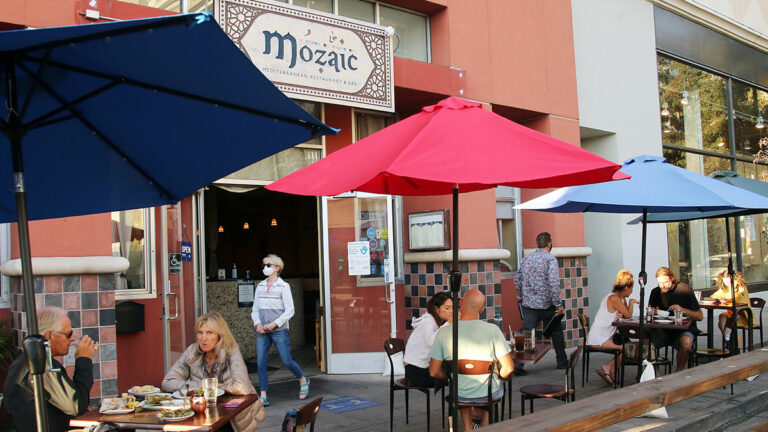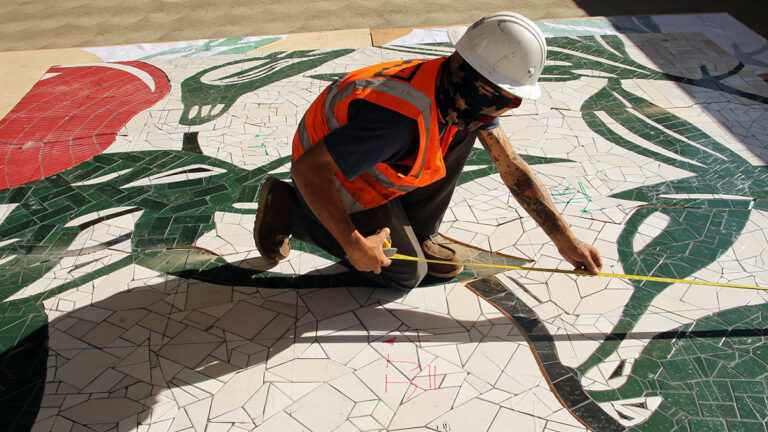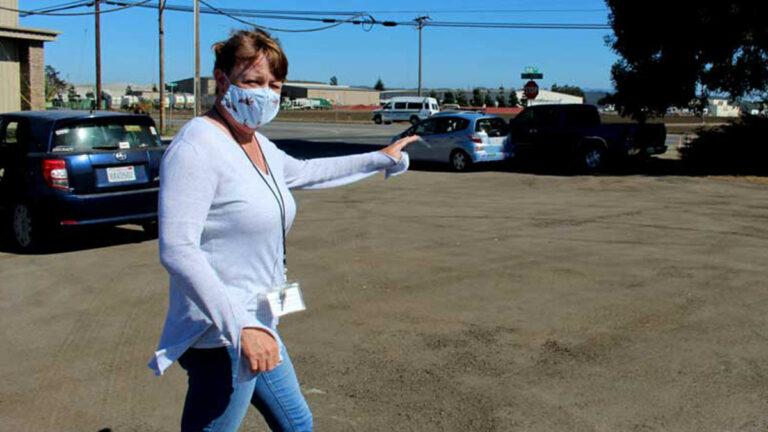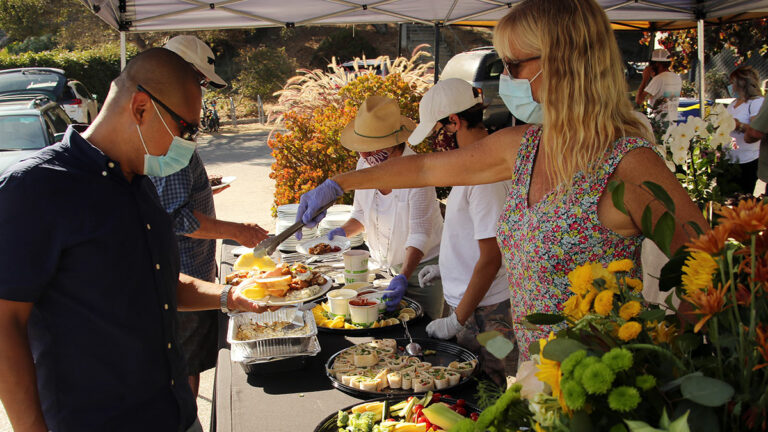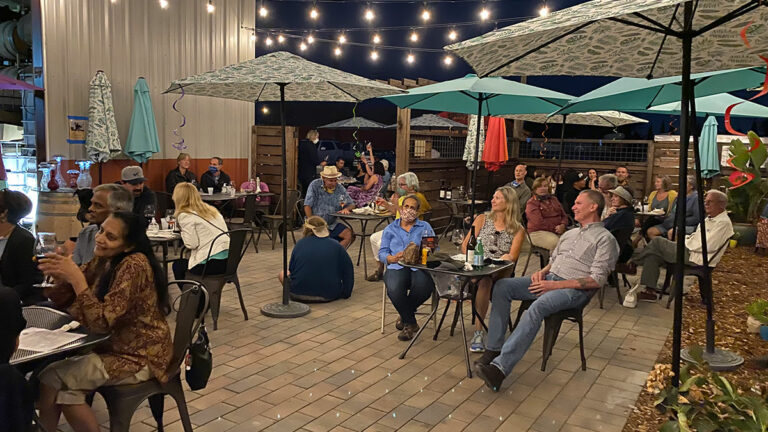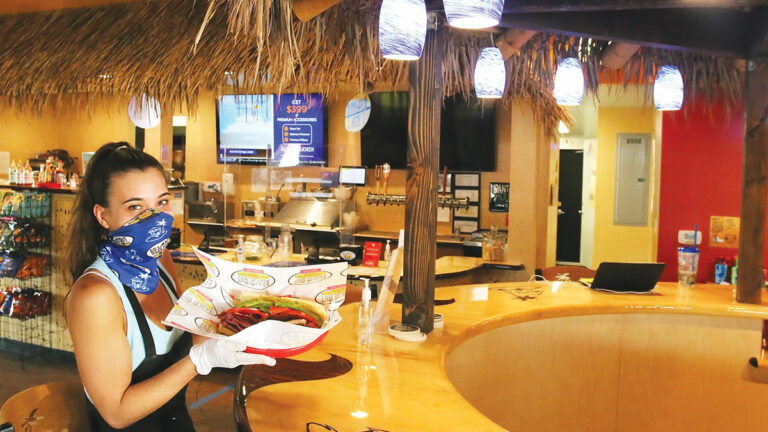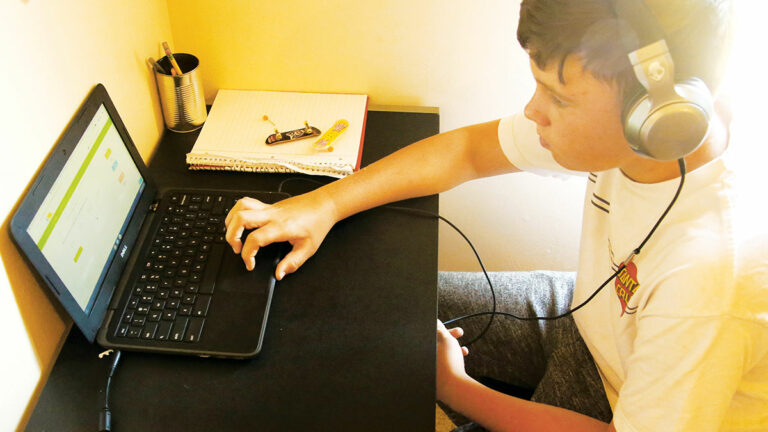Because many in-person events across Santa Cruz County have been canceled or postponed during the pandemic, Good Times is compiling a weekly list of virtual events hosted by local nonprofits, artists, fitness instructors and businesses. To submit your virtual event, send an email to ca******@go*******.sc.
ARTS AND MUSIC
TOP DOG SCREENING We are excited to announce a Virtual Screening of Top Dog. The Top Dog Film Festival was launched in 2017 to showcase the incredible bond between dogs and their people through independent films. Touring annually, the Top Dog Film Festival screens over two hours of the most inspirational, heartwarming and entertaining films related to dogs and their human companions from independent filmmakers around the globe. Including a carefully curated selection of films of varying lengths and styles covering topics relevant to dogs and dog lovers. A portion of ticket sales benefits Santa Cruz County Animal Shelter. Sponsored by Pacific Paw, Santa Cruz Waves, Pet Pals and Community Mobile Vet, Dr. Hannah Good, D.V.M., and Santa Cruz Film Festival. Sept. 20-25. Learn more at riotheatre.com/events-2/2020/9/12/top-dog-film-festival.
CLASSES
TECH TALKS: NEWS AND ENTERTAINMENT FOR APPLE AND ANDROID Are you getting the most out of your mobile device? Join us for a discussion about news and entertainment apps. We’ll share our joys and disappointments. We look forward to also learning from you. Register at: santacruzpl.libcal.com/event/7049332. Thursday, Sept. 24, 11am.
GENTLE YOGA Nurture your mind-body-spirit connection with this gentle hatha yoga class. It includes asana, pranayama, and meditation to help you destress, get clear, and feel centered. The practice can also improve flexibility, strength, and balance. Great for all levels and all are welcome! Registrations must be received at least two hours prior to start time. Register by donating any amount via paypal.me/LunaRaeWellness, $10-20 suggested. Affected by the fires? Experiencing financial hardship? Join for no cost, with no questions asked, by emailing lu*************@gm***.com. First time? Try it out for free by emailing lu*************@gm***.com. About the teacher: Luna Rae has a passion for helping others live happier, healthier lives through education, empowerment, and community. Luna is a certified yoga teacher, food and mindful eating educator, and peer support facilitator. Luna has been practicing yoga for 10 years and completed her 200-hour yoga teacher certification in 2015 at Ramapo College of New Jersey. There, she also earned a B.A. in Psychology and a B.A. in Nutrition and Community Health. Come see how her wellness classes are filled with connection and compassion to nourish your body, mind, and spirit! Wednesdays at 5:30pm.
65-HOUR TRAINING Community members may participate in a Monarch Services virtual training to become California state-certified peer counselors for survivors of sexual assault, domestic violence and human trafficking. The training will be held through Oct. 14 during these times: Mondays 1pm-3:30pm, Wednesdays 1pm-3:30pm, Thursdays 1pm-3:30pm. Register by emailing al********@mo********.org.
NAMI FAMILY-TO-FAMILY CLASS NAMI’s Family-to-Family Class is an eight-week educational program for family and friends of adults with mental health challenges. Learn about how to support your loved one, gain valuable communication and coping skills, and become educated on the latest mental health research. Class is led by two trained volunteers with lived experience caring for someone with mental health conditions. Sign up online and learn more at namiscc.org/family-to-family.html. Mondays and Wednesdays at 6pm.
CHILDBIRTH EDUCATION WEEKEND EXPRESS CLASS This Saturday and Sunday virtual class from Dominican Hospital is intended for expectant mothers and their labor support team. Focus will be on the birth process, including the stages of labor and when to go to the hospital. Non-pharmaceutical coping techniques for pain, including breath work, mindfulness practices, supportive touch and positions for labor and birth, along with standard hospital procedures, pain medication options, medical interventions, cesarean birth, postpartum recovery, newborn procedures and breastfeeding basics. In this class, we will actively practice positions and coping techniques for pain, so please be dressed for movement. Please register for the PEP class session. Only after you have completed this process, the Zoom meeting information will be provided to you via email prior to your class. Classes run 1-5:30pm on these days: Sept. 26-27, Oct, 24-25, Nov. 14-15, Dec. 19-20.
COMMUNITY
FARM TO FORK GALA The fifth annual Farm to Fork Gala, benefiting human services nonprofit Community Bridges, will be held virtually from Sept. 19-27. The public is invited to get comfortable at home, grab their favorite snack and log in to Community Bridges first online auction, Farm to Fork “To-Go.” The weeklong event culminates in a Facebook livestream on Sunday, Sept. 27 at 4pm and will feature surprise guest stars and a Mystery Treasure Chest prize. All proceeds from the auction benefit Community Bridges’ 10 programs that serve over 17,000 children, families and seniors throughout Santa Cruz County. Demand for services, like meals for seniors, youth tutoring, food distributions and grocery gift cards, unemployment and rental assistance, has multiplied. Funds raised from Farm to Fork “To-Go” will ensure that we can continue to meet the needs of those who have been most impacted by Covid-19 and the CZU Lightning Complex fire.
APTOS BRANCH LIBRARY VIRTUAL OPEN HOUSE A new Aptos Branch Library is on the way! The Santa Cruz Public Library, County of Santa Cruz Department of Public Works, Anderson Brule Architects (ABA), Bogard Construction and Second District Supervisor Zach Friend invite you to the Aptos Branch Library Virtual Open House. Learn about the design, ask questions and share comments. The Aptos Branch of the Santa Cruz County Public Library System has outgrown its current facilities. The county has completed a feasibility study, selected a design-build team, and begun the design process. The design concept has been developed based on input gathered from four community meetings during the study. Bogard Construction and ABA, the design-build team, is now ready to share the design concept, answer questions, and hear your comments. Come see the exciting results of the hard work and collaboration of the community and the county at a virtual open house event. The discussions will focus on site and architecture and interior layout. RSVP at: surveymonkey.com/r/NewAptosBranchLibrary. Reserva: surveymonkey.com/r/AptosSRC. Monday, Sept. 28, 5:30pm.
ANNUAL WALK TO END ALZHEIMER’S Join the fight for Alzheimer’s first survivor. This year, the Walk to End Alzheimer’s is everywhere! We aren’t gathering as a large group on Sept. 26, but we will be walking safely with family and friends in our own neighborhoods, parks, and favorite trails throughout Santa Cruz County—walking to raise funds and awareness for Alzheimer’s care, support, and research. Mark your calendar, register, watch our inspiring online ceremony, drive by our beautiful Promise Garden, and help us paint Santa Cruz County purple to honor and celebrate the millions of families touched by Alzheimer’s and all other dementias. Visit act.alz.org/santacruz2020 to learn more! For more information on participating or getting involved with your local Walk to End Alzheimer’s, please call 831-647-9890 or visit alz.org/walk.
VIRTUAL WALK-A-MILE Our annual Walk-a-Mile fundraiser is going virtual this year! The walk will take place on Saturday, Oct. 3, to coincide with the first weekend of Domestic Violence Awareness Month. Between now and event day, participants can sign up online individually or as a team, create a personalized web page and outreach to their networks to fund their walk. Through our event site, social media networks and teams, we will raise awareness and build support for the movement to end violence in our community. All funds raised through this year’s Walk-a-Mile event will go toward meeting the immediate needs of survivors (housing support, food, transportation, etc.), violence prevention programming for youth and teens, as well as outreach to those most at-risk of violence during this time. Learn more at monarchwam.funraise.org.
LUMA BOOK CLUB This is a time of seismic shift, and yet also one of opportunity. Luma Yoga is a community center operating on principles of inclusion, compassion, and, yes, reflection, but make no mistake—also of action. The first step in effective action is gaining knowledge. To this end, Luma is hosting a book club on the topic of racism and social justice issues. The reading groups will be held remotely (for now) over Zoom Thursday nights 7-8:15pm. The purpose of the groups is to learn the endless shapes oppression can take in the world, to recognize our own biases within ourselves, and to move from discomfort to action in support of Black and non-white POC. The groups will be facilitated by Steven Macramalla, a professor of psychology at SJSU. The Club will work on a 3- to 4-week cycle, reading one book per cycle, with several chapters covered each week. For more info visit lumayoga.com. Thursdays at 7pm.
TALES TO TAILS GOES VIRTUAL SCPL’s early childhood literacy program, Virtual Tales to Tails, has moved to a new time slot: Mondays, 3:30-4:30pm. At the end of your school day, hop online and have fun reading at your own pace to an audience of therapy dogs, cats and other guest animals. Have math homework? Good news! Your furry audience would also love to learn how to count, add and subtract. Register online. Registrants receive reminders, links to the live program, and fun (educational) activities to complete and have showcased on future sessions Learn more at santacruzpl.libcal.com/event/6764938.
GROUPS
PEER SUPPORT CIRCLE These are especially hard times. Whatever you’re struggling with, you’re not alone! The Peer Support Circle is a facilitated container to express, connect, and support each other with care and empathy. Authentic shares and compassionate responses are encouraged. Whether you’re dealing with a challenging situation or difficult emotions, we are here for you. All are welcome! Drop-in, so you can come any week you like. Space is limited to six participants each week. Registrations must be received at least two hours prior to start time. Register by donating any amount via paypal.me/LunaRaeWellness, $10-20 suggested. Affected by the fires? Experiencing financial hardship? Join for no cost, with no questions asked, by emailing lu*************@gm***.com. First time? Try it out for free by emailing lu*************@gm***.com. About the facilitator: Luna Rae has a passion for helping others live happier, healthier lives through education, empowerment, and community. Luna is a peer support facilitator, certified yoga teacher, and mindful eating educator. Luna has been facilitating peer support groups since 2012. Her educational background includes a B.A. in Psychology and a B.A. in Nutrition and Community Health from Ramapo College of New Jersey. Come see how her wellness offerings are filled with connection and compassion to nourish your body, mind, and spirit! Sundays at 11:30am.
VIRTUAL YOUNG ADULT (18-30) TRANSGENDER SUPPORT GROUP A weekly peer support group for young adults aged 18-25 who identify as transgender, non-binary, genderqueer, agender, or any other non-cisgender identity. This is a social group where we meet and chat among ourselves, sharing our experiences and thoughts in a warm, welcoming setting. Our meetings will be held on Discord during the shelter-in-place order. For more info, contact Ezra Bowen at tr***@di*************.org.
LGBTQNBI+ SUPPORT GROUP FOR CORONAVIRUS STRESS This weekly LGBTQNBI+ support group is being offered to help us all deal with stress during the shelter-in-place situation that we are experiencing from the coronavirus. Feel free to bring your lunch and chat together to get support. This group is offered at no cost and will be facilitated by licensed therapists Shane Hill, Ph.D., and Melissa Bernstein, LMFT #52524. Learn how to join the Zoom support group at diversitycenter.org/community-calendar.
OUTDOOR
SEA OTTER AWARENESS WEEK Virtual Sea Otter Awareness Week is Sept. 20-26. Discover the critical role sea otters play in the nearshore ecosystem during the Seymour Center’s virtual Sea Otter Awareness Week. Special at-home activities, lectures, interviews with scientists, and crafts will highlight sea otters’ natural history, reveal conservation issues facing these marine mammals, and so much more. For more details on Sea Otter Awareness Week events and activities, visit the Seymour Center’s website: seymourcenter.ucsc.edu/learn/family-activities/family-events/#sea-otter-week.
EVERGREEN AT DUSK: CEMETERY HISTORY TOURS Discover the shadows and secrets found within Evergreen Cemetery, one of the oldest public cemeteries in California, on a self-guided tour of the grounds. Bring your curiosity (and maybe some flashlights) as you explore the final resting place of Santa Cruz’s early settlers. The 45-minute tour is a self-driven adventure uncovering the stories and tombstones of the people who made Santa Cruz what it is today. Designed for daring, curious, and history-loving households, this tour is great for all ages! Registration is limited to one household per tour to ensure plenty of spacing as groups individually explore the cemetery. Each tour should take 30-45 minutes to complete. The time you select is when your group/household tour start; we recommend arriving 5-10 minutes early to ensure you can begin right on time. Dates and times vary. You will be able to select the date and time of your tour when purchasing tickets. Learn more at santacruzmah.org/events.
ANNUAL COASTAL CLEANUP For over a decade, Save Our Shores has regionally hosted Annual Coastal Cleanup in Santa Cruz and Monterey counties. This year, to prevent the spread of Covid-19, Save Our Shores will not be hosting cleanups at organized sites on one particular day. Instead, you can conduct your own local cleanup with those you have been sheltering in place with on any Saturday during the month of September. These individual, close-to-home cleanups will protect our oceans beginning at our own front doors. Learn more and find out how to participate by visiting saveourshores.org/coastal-cleanup-2020.


